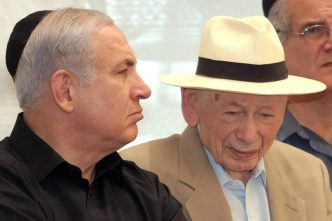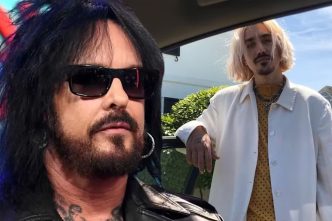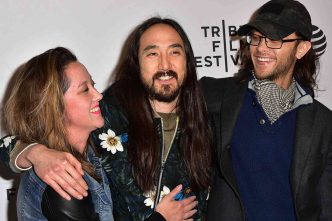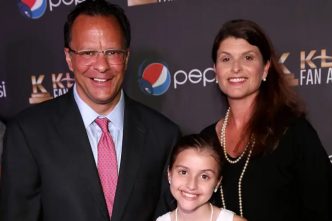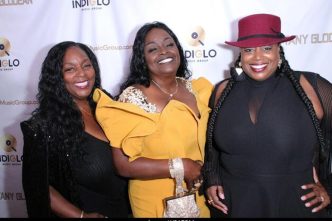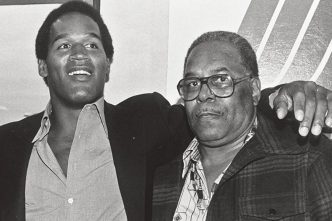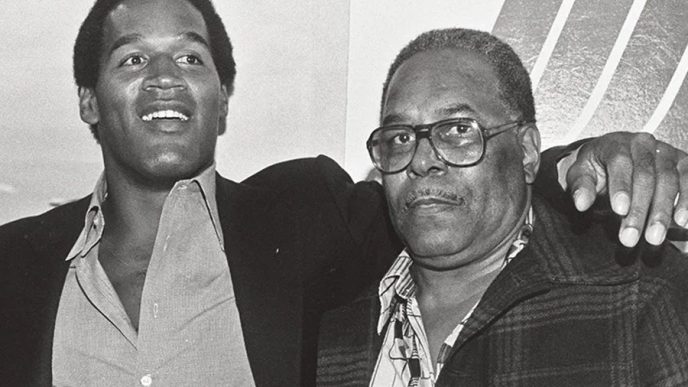Basic Information
| Field | Details |
|---|---|
| Full Name | Nathan Mileikowsky (נתן מיליקובסקי) |
| Also Known As | Natan/Nathan Milejkowski; used the Hebrew surname “Netanyahu” in writings |
| Born | 15 August 1879, Kreva, Russian Empire (today Belarus) |
| Died | 4 February 1935, Jerusalem |
| Burial | Mount of Olives, Jerusalem |
| Parents | Zvi (Tzvi) Mileikowsky; Liba Gitel (Halevi) Mileikowsky |
| Spouse | Sarah (Sarah Lurie/Luria) |
| Children | Nine; including Benzion Mileikowsky (Netanyahu) and Elisha Netanyahu |
| Notable Grandchildren | Yonatan (Yoni) Netanyahu (1946–1976); Benjamin Netanyahu (b. 1949); Iddo Netanyahu (b. 1952) |
| Education | Volozhin Yeshiva (ordination) |
| Occupations | Rabbi, educator, Hebrew-language orator, Zionist activist |
| Languages | Hebrew, Yiddish |
| Aliyah | 3 June 1920, to Mandate Palestine (aboard the Ovitzia) |
| Residences | Warsaw; Łódź; Safed; Rosh Pina; Jerusalem (Beit HaKerem) |
| Commemoration | Kikar Nathan Mileikowsky (public square) near Mount Herzl |
From Kreva to Jerusalem: Early Life and Education
Nathan Mileikowsky was born on 15 August 1879 in Kreva, then a town in the Russian Empire. In a world still lit by oil lamps and driven by horse carts, he gravitated to books and ideas, enrolling at the Volozhin Yeshiva—the prestigious “mother of yeshivot.” There he received rabbinic ordination and discovered a gift that would chart his life’s course: a voice that could fill a hall and a mind that could move one.
Marriage to Sarah Lurie around 1908 accompanied a shift from study to leadership. The couple made their way to Warsaw, epicenter of Jewish intellectual life, where Mileikowsky took charge of Hebrew instruction at the Krinsky (Mordechai Yaakov) Gymnasium. He fused sacred learning with modern Hebrew culture, steeping students in the language that would soon find its state.
Orator on the Road: 1910s–1920s
By 1912, Mileikowsky was in Łódź as a pulpit orator (“darshan”) of the Zionist synagogue, giving addresses that braided text, history, and urgent purpose. The First World War battered Jewish communities across Eastern Europe, but Mileikowsky’s message endured: the renaissance of Jewish national life required both spirit and structure.
After the war, the family turned toward the land he praised from countless podiums. On 3 June 1920, they arrived in Mandate Palestine. Mileikowsky’s platform expanded from local congregations to a transnational stage. In 1924 he traveled to England; in 1925 he toured the United States on behalf of Zionist funds and institutions, delivering what contemporaries called hundreds of speeches. His Hebrew rang like a shofar blast; his Yiddish wrapped crowds in warmth and urgency. He was not merely fundraising—he was midwifing a future.
Educator and Organizer in the Yishuv
In the early 1920s he served in schools in Safed and Rosh Pina, then settled in Jerusalem’s Beit HaKerem neighborhood in 1922. There he increasingly used the Hebrew surname “Netanyahu,” a mantle later carried by his sons. Mileikowsky believed that education was nation-building in slow motion: every conjugation memorized, every line of poetry recited, every map of the land learned by heart was a stone in the wall of a people’s restored home.
His efforts were practical as well as rhetorical. In 1929 he purchased land in Herzliya with hopes of establishing an agricultural holding, reflecting the era’s ethos that the soil itself was a classroom and a covenant.
Publications and Ideas
In 1928, Mileikowsky gathered his orations into print. The collection—circulated under titles invoking “People” and “State” (Am uMedinah)—bottled the lightning of his lectures: the Bible as blueprint, language as lifeblood, and communal discipline as the engine of sovereignty. On the page, as at the podium, he sought to align personal virtue with collective action.
The early 1930s brought turbulent public debates across the Yishuv, and Mileikowsky, a man of conscience and conviction, did not stand apart. He joined committees, signed statements, and lent his cadence to arguments over direction and responsibility. The work took its toll. On 4 February 1935, he died in Jerusalem. He was eulogized by leading figures and laid to rest on the Mount of Olives, his name already woven into the city’s soundscape.
Dates at a Glance
| Year | Event |
|---|---|
| 1879 | Born in Kreva, Russian Empire |
| ~1897 | Studies at Volozhin Yeshiva; ordained |
| c. 1908 | Marries Sarah Lurie; appointed to Hebrew studies leadership in Warsaw |
| 1912 | Moves to Łódź; serves as Zionist pulpit orator |
| 1920 (3 June) | Aliyah to Mandate Palestine (aboard Ovitzia) |
| 1922 | Settles in Jerusalem (Beit HaKerem); publicly adopts “Netanyahu” in writings |
| 1924 | Fundraising and speaking tour in England |
| 1925 | Lecture tour across the United States |
| 1928 | Publishes a collection of speeches/essays |
| 1929 | Purchases land in Herzliya |
| 1933–1934 | Public advocacy and committee work during political controversies |
| 1935 (4 Feb) | Dies in Jerusalem; buried on Mount of Olives |
The Family: Branches of a Public Lineage
Mileikowsky and his wife Sarah raised nine children. The family home was an academy in miniature—books on the table, debates in the air, the Hebrew calendar marking time. Among the children, two became especially prominent in public spheres.
Benzion Mileikowsky (later known as Benzion Netanyahu), born in 1910, emerged as a historian of medieval Jewish life and a public intellectual with an international academic career. His brother, Elisha Netanyahu (1912–1986), excelled in mathematics and served at the Technion, contributing to both research and academic leadership. These paths—history and mathematics—mirrored their father’s dual devotion to ideas and discipline.
The next generation carried the family name onto world stages. Yonatan (Yoni) Netanyahu (1946–1976), son of Benzion, became an officer renowned for courage and clarity of purpose. Benjamin Netanyahu (b. 1949) entered public life and rose to national leadership, while Iddo Netanyahu (b. 1952) trained as a physician and later turned to literature and theater. Great-grandchildren, including Yair and Avner, and a granddaughter, Noa, represent subsequent chapters in a story that now spans continents and professions.
The family name “Netanyahu,” seeded by Nathan’s pen and presence in Jerusalem, became a banner recognized far beyond the Yishuv’s early neighborhoods. Yet the root remained the same: a home shaped by Hebrew letters, disciplined study, and a conviction that words can move history.
Selected Descendants (Snapshot)
| Name | Relation to Nathan | Life Dates | Field |
|---|---|---|---|
| Benzion (Mileikowsky) Netanyahu | Son | 1910–2012 | Historian, academic |
| Elisha Netanyahu | Son | 1912–1986 | Mathematician, Technion leader |
| Yonatan (Yoni) Netanyahu | Grandson | 1946–1976 | Military officer |
| Benjamin Netanyahu | Grandson | b. 1949 | Public leadership |
| Iddo Netanyahu | Grandson | b. 1952 | Physician, author |
| Yair Netanyahu | Great-grandson | — | Public figure |
| Avner Netanyahu | Great-grandson | — | Public figure |
| Noa Netanyahu-Roth | Great-granddaughter | — | Public figure |
The Voice, the Name, the Square
Walk west from Mount Herzl and you’ll find a square—Kikar Nathan Mileikowsky—named for the man whose lectures once lit up evenings from Warsaw to Jerusalem. It is fitting: a public space for a public voice. The stones remember what sound cannot: that a people-building project needs teachers and tellers, fundraisers and farmers, rabbis and rhetoricians. Mileikowsky stood at that crossroads, speaking a future into being and then helping to organize it.
FAQ
Who was Nathan Mileikowsky?
He was a rabbi, educator, and celebrated Hebrew-language orator who became a leading Zionist advocate in Europe and Mandate Palestine.
When and where was he born and when did he die?
He was born on 15 August 1879 in Kreva and died on 4 February 1935 in Jerusalem.
What was his main contribution?
He fused scholarship and activism—teaching Hebrew, organizing schools, and delivering powerful speeches that rallied support for Jewish national revival.
Did he immigrate to Palestine?
Yes; he arrived on 3 June 1920 and later settled in Jerusalem’s Beit HaKerem neighborhood.
What languages did he use in public speaking?
He spoke primarily in Hebrew and Yiddish, addressing both scholarly and popular audiences.
Did he publish any works?
Yes; he published a collection of orations in 1928 that captured his themes of peoplehood and statehood.
How many children did he have?
He had nine children, including Benzion (a historian) and Elisha (a mathematician).
How is he related to Benjamin Netanyahu?
Through his son Benzion, he is the grandfather of Benjamin Netanyahu.
Where is he buried?
He is buried on the Mount of Olives in Jerusalem.
Did he change his surname?
He increasingly used the Hebrew surname “Netanyahu” in the 1920s, a name adopted by his sons and descendants.

